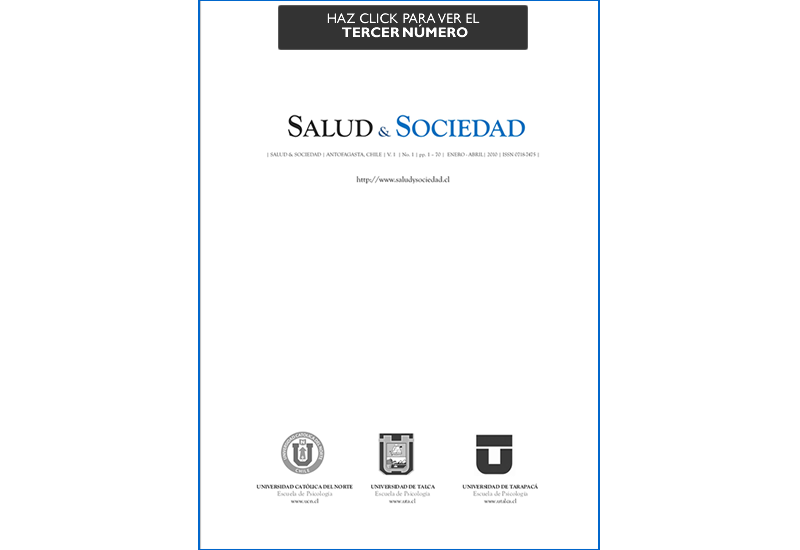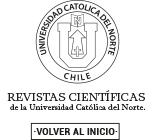Adicción al trabajo, satisfacción laboral y familiar en académicos de una universidad estatal de chilena.
DOI:
https://doi.org/10.22199/S07187475.2010.0003.00006Keywords:
Adicción al trabajo, satisfacción laboral, familiar, Workaholism, Family satisfaction, work satisfaction,Abstract
La adicción al trabajo (AT) ha sido definida por algunos como una psicopatología de comienzo insidioso y curso progresivo, caracterizada por conductas desadaptativas con consecuencias negativas para quien la padece. Controversialmente y desde el punto de vista de un empleador eventual, la AT podría asociarse a aumento inicial de la producción. Se busca aquí obtener indicadores de AT y sus eventuales asociaciones con satisfacción laboral (SL) y satisfacción familiar (SF).
Una muestra de 105 académicos de una universidad estatal chilena responden el Test Riesgo de Adicción Laboral (Robinson, 1989), la Escala de SF por Adjetivos (Barraca & López-Yarto, 1997) y el Cuestionario de SL S20-23 (Meliá & Peiró, 1989). Se observa altos índices de AT (55.2%) y también indicadores positivos de SL (M=5.7, en escala de 1 a 7) y familiar (M=141.7 en escala de 0 a 170). La AT y la SL correlacionan negativamente (r = -0.325), lo cual es especialmente marcado en las mujeres (r= - 0.71) sin embargo no se observa relaciones significativas entre AT y SF. Estos y otros resultados y sus posibles explicaciones teóricas son analizados.
Work addiction (WA) is an insidious and progressive disorder that implies several maladaptive behaviors and negative consequences for people’s life. Controversially and from the point of view of a potential employer, the WA may be associated with initial increase in the production. We want to obtain indicators of WA and its possible association with job satisfaction (JS) and family satisfaction (FS).
A sample of 105 faculty answered the Work addiction Risk Test (Robinson, 1989), the Family Satisfaction Scale (Barraca & López-Yarto, 1997) and the Work Satisfaction Questionnaire (Meliá & Peiró, 1989). Descriptive analysis shows high levels of WA (55%), but also good levels of WS (M= 5.7 in a 1-7 scale) and FS (M=141.7 in a 0-170 scale). Among other specific results, WA and WS were negatively correlated (r=-0.325), especially in women (r=-0.71). No significant relationship was observed between WA and FS, the results and theoretical alternatives are discussed.
References
Burke, R. (1999). Workaholism and extra-work satisfactions. International Journal of Organizational Analysis, 7, 352-354.
Burke, R. Snir, R. & Harpaz, I. (2006). Workaholism in organizations: new
research directions. Career Development International, 11, 369 – 373.
Del Líbano, M.; García, M.; Llorens, S. y Soria, M. (2004). ¿Existen relaciones significativas entre adicción al trabajo y satisfacción?. Forum de Recerca. Facultat de Ciències Humanes i Socials. Universitat Jaume I.
Hernández, D., Salazar, A. & Gómez, V. (2004). Relación entre los aspectos psicosociales del ambiente de trabajo y el riesgo cardiovascular en hombres. Revista Latinoamericana de Psicología, 36, 107–123.
Index Mundi Country Facts (2009, Julio). Producto Interno Bruto (PIB). Extraído el 09 de julio de 2009 desde http://indexmundi.com/es/chile/producto_interno_bruto_(pib).html
Johnstone, A & Johnston, L. (2005). The relationship between organizational climate, occupational type and workaholism. New Zealand Journal of Psychology, 34, 181–188.
Machlowitz, M. (1980). Workaholics: Living with them, working with them. Reading, MA: Adisson-Wesley.
McMillan, L., Brady, E., O?Driscoll, M. & Marsh, N. (2002). A multifaceted validation study of Spence and Robbins? (1992) workaholism battery. Journal of Occupational and Organizational
Psychology, 75, 357-368.
Meliá, J. y Peiró, J. (1989). La medida de la satisfacción laboral en contextos organizacionales: El Cuestionario de Satisfacción S20/23. Psicologemas. (5): 59-74.
Moyano, E.; Castillo, R. y Lizana, J. (2008). Trabalho informal: motivos, bem-estar subjetivo, saúde e felicidade de vendedores ambulantes. Psicología em Estudo, v.13, n.4, 693-701.
Mudrack, P. (2004). Job involvement, obsessive compulsive personality traits, and workaholic behavioral tendencies. .J. of Organizational Change Management, 17, 490-508.
Mudrack, P. & Naughton, T. (2001). The assessment of workaholism as behavioral tendencies: Scale develoment and preliminary empirical
testing. International Journal of Stress Management, 8, 93-111.
Oates, W. (1971). Confessions of a workaholic: The facts about work addiction. New York: World
Pietropinto, A (1986). The workaholic spouse.Medical Aspects of Human
Sexuality,20, 89-96.
Piotrowski, C & Vodanovich, S. (2006). The interface between workaholism and workfamily conflict: A review and conceptual framework. Organization Development Journal, 24, 84-92.
Piotrowski, C & Vodanovich, S. (2008). The workaholism syndrome: an emerging issue in the psychological literature. Journal of Instructional Psychology, 35, 103-105.
Porter, G. (1996). Organizational impact of workaholism: Suggestions for researching the negative outcomes of excessive work. Journal of Occupational Health Psychology, 1, 70-84.
Robinson, B. (1994). Validity of the work addiction risk test. Perceptual and Motor Skills, 78, 337-338.
Robinson, B. (1995). Measuring workaholism: content validity of the work addiction risk test. Psychological Reports, 77, 657-658.
Robinson, B. (1996). Concurrent validity of the work addiction risk test as a measure of workaholism. Psychological Reports, 79, 1313-1314.
Robinson, B. (2000). Workaholism: Bridging the gap between workplace, sociocultural, and family research. Journal of Employment
Counseling, 37, 31-47.
Robinson, B. (2007). Chained to the Desk: A guidebook for workaholics, their parents and children, and the clinicians who treat
them. (2ª Ed). New York: New York University Press.
Robinson, B. & Kelley, L.(1998). Adult children of workaholics: Self-concept, anxiety, depression, and locus of control. The American Journal of family Therapy, 26, 223-238.
Robinson, B.& Post, P. (1995). Work addiction as a function of family of origin and its influence on current family functioning. The Family
Journal, 3, 200-206.
Robinson, B. & Post, P. (1997).Risk of work addiction to family functioning. Psychological Reports, 81, 91-95.
Russo, A. & Waters, L. Workaholic worker type differences in work-family conflict: the moderating role of supervisor support and
flexible work scheduling. Career Development International, 11, 418-439.
Schaufeli, W., Taris, T. & Rhenen, W. (2008) Workaholism, Burnout, and Work Engagement: Three of a Kind or Three Different Kinds of
Employee Well-being? Applied Psychology: An International Review, 57,
173–203.
Scott, J., Moore, K. & Miceli, M. (1997). An exploration of the meaning and consequences of workaholics. Human Relations, 50, 287-314.
Spence, J. & Robbins, A. (1992). Workaholism: definition, measurement
and preliminary results. Journal of Personality Assessment, 58, 160-178.
Snir, R. & Harpaz, I. (2004). Attitudinal and demographic antecedents of workaholism. Journal of Organizational Change Management, 17, 5, 520-536.
Snir, R. & Harpaz, I. (2006). The workaholism phenomenon: a cross-national perspective. Career Development International, 11, 5, 374-393.
Spruell, G. (1987). Work fever. Training and Development Journal, 41, 41-45. Subsecretaría de Salud.
Published
How to Cite
Issue
Section
Los autores continúan como propietarios de sus trabajos, y pueden volver a publicar sus artículos en otro medio sin tener que solicitar autorización, siempre y cuando indiquen que el trabajo fue publicado originariamente en Revista Salud & Sociedad (ISSNe:0718-7475).



_(1).png)





